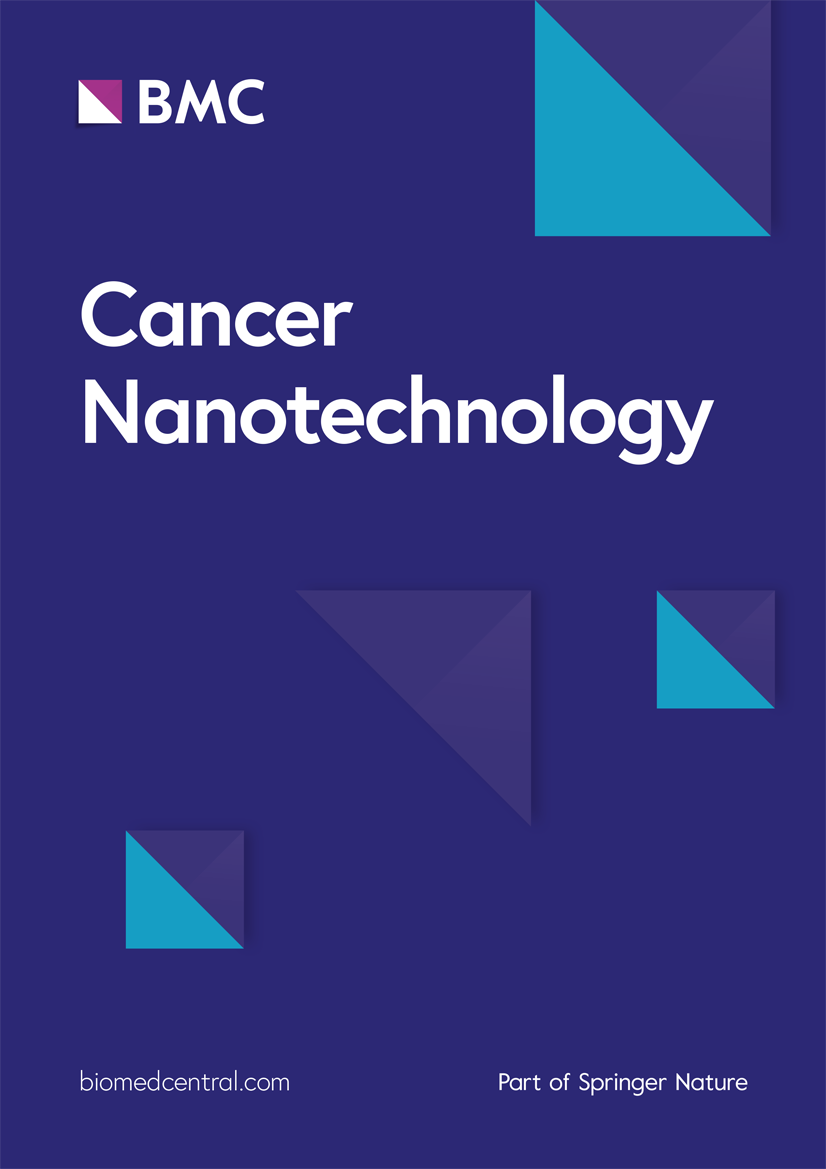Opportunities and challenges of indocyanine green in gastrointestinal cancers for intraoperative and nano-medicine application
IF 4.8
2区 工程技术
Q2 NANOSCIENCE & NANOTECHNOLOGY
引用次数: 0
Abstract
The morbidity and mortality of gastrointestinal tumours remain high worldwide. Surgical resection is currently the most critical radical therapeutic schedule, while postoperative complications and sentinel lymph node (SLN) identification are closely related to the outcome. Indocyanine green (ICG)-mediated fluorescence imaging is increasingly being used in gastrointestinal surgery. It has been embraced by various surgical disciplines as a potential method to improve lymph node detection and enhance surgical field visualization. ICG can passively concentrate in SLN because of enhanced permeation and retention effects. After excitation by near-infrared light devices, SLN can display higher intensity fluorescence, helping visualization for better lymph node dissection. In addition, visual assessment of intestinal blood flow through ICG may reduce the incidence of anastomotic leakage. Although it has good clinical application, ICG-imaging still faces some problems, such as a higher false-negative rate, poorly targeted biodistribution, and lower fluorescence contrast, due to the lack of active tumour targeting. Thus, different ICG-coupled nanoparticles with inherent characteristics or functional modification-enhanced SLN identification features for gastrointestinal cancers bring benefit through active tumour targeting, superior tumour-background ratio, and high resolution. Nano-ICG combined with potential substances, including enhanced imaging contrast and/or combination therapy (chemotherapy, targeted therapy, immunotherapy, etc.), have been packaged and accumulated in the tumour area through active targeting for multimodal imaging and treatment. In this review, we outline the intraoperative application and possible future nanodirections of ICG in gastrointestinal cancer. The prospects and challenges of nano-ICG diagnostic and therapeutic methods in clinical applications are also discussed.吲哚菁绿在胃肠道癌症术中和纳米医学应用中的机遇与挑战
全世界胃肠道肿瘤的发病率和死亡率居高不下。手术切除是目前最关键的根治性治疗方案,而术后并发症和前哨淋巴结(SLN)的识别与治疗效果密切相关。吲哚菁绿(ICG)介导的荧光成像技术正越来越多地应用于胃肠道手术。它已被各种外科学科视为一种潜在的方法,可改善淋巴结检测并提高手术视野。由于渗透和滞留效应增强,ICG 可被动地聚集在 SLN 中。经近红外光设备激发后,SLN 可显示出更高强度的荧光,有助于更好地进行淋巴结清扫。此外,通过 ICG 对肠道血流进行可视化评估可降低吻合口漏的发生率。虽然 ICG-imaging 有着良好的临床应用前景,但它仍面临着一些问题,如由于缺乏主动肿瘤靶向性,假阴性率较高、生物分布靶向性差、荧光对比度较低等。因此,不同的 ICG 耦合纳米粒子具有固有特性或功能修饰增强的 SLN 识别功能,可通过主动肿瘤靶向、优异的肿瘤-背景比和高分辨率为胃肠道癌症带来益处。纳米 ICG 与潜在物质(包括增强成像对比度和/或联合治疗(化疗、靶向治疗、免疫治疗等))相结合,通过主动靶向在肿瘤区域包装和积累,用于多模态成像和治疗。在这篇综述中,我们概述了 ICG 在胃肠道癌症中的术中应用和未来可能的纳米定向。此外,还讨论了纳米 ICG 诊断和治疗方法在临床应用中的前景和挑战。
本文章由计算机程序翻译,如有差异,请以英文原文为准。
求助全文
约1分钟内获得全文
求助全文
来源期刊

Cancer Nanotechnology
Pharmacology, Toxicology and Pharmaceutics-Pharmaceutical Science
CiteScore
5.20
自引率
1.80%
发文量
37
审稿时长
15 weeks
期刊介绍:
Aim:
Recognizing cancer as a group of diseases caused by nanostructural problems (i.e. with DNA) and also that there are unique benefits to approaches inherently involving nanoscale structures and processes to treat the disease, the journal Cancer Nanotechnology aims to disseminate cutting edge research; to promote emerging trends in the use of nanostructures and the induction of nanoscale processes for the prevention, diagnosis, treatment of cancer; and to cover related ancillary areas.
Scope:
Articles describing original research in the use of nanostructures and the induction of nanoscale processes for the prevention, diagnosis and treatment of cancer (open submission process). Review, editorial and tutorial articles picking up on subthemes of emerging importance where nanostructures and the induction of nanoscale processes are used for the prevention, diagnosis and treatment of cancer.
 求助内容:
求助内容: 应助结果提醒方式:
应助结果提醒方式:


